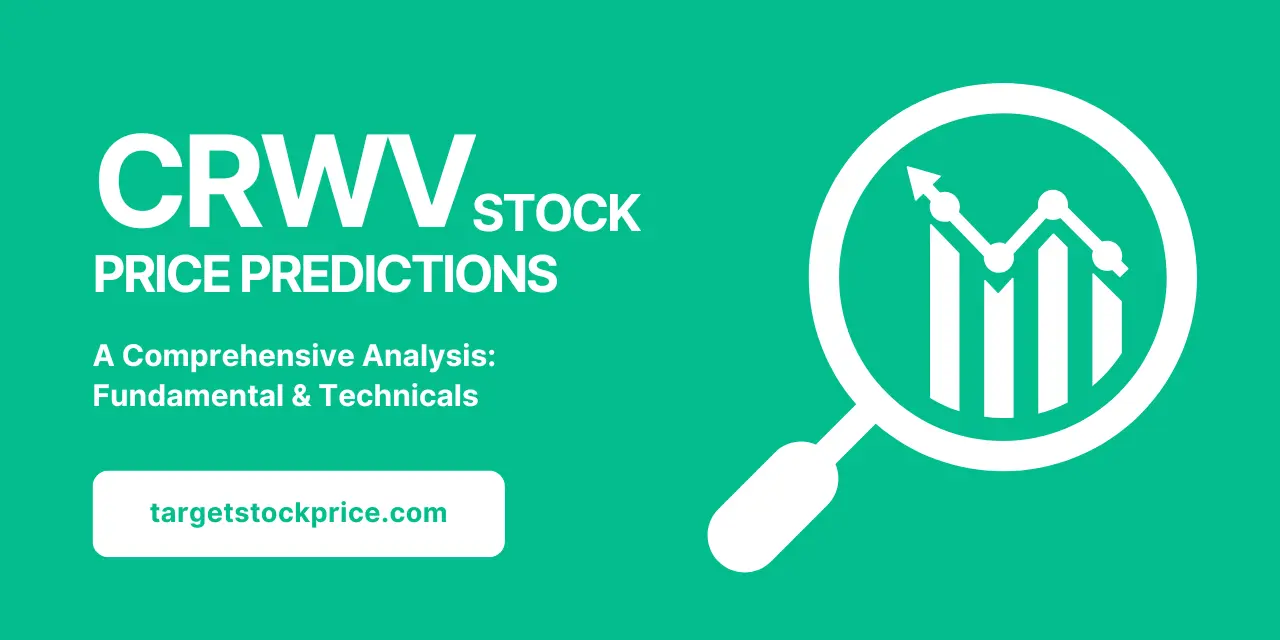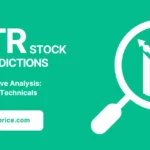CoreWeave stock price target is on the radar of many investors as the AI cloud computing boom reshapes the tech landscape. With its specialized GPU infrastructure powering everything from generative AI to high-performance computing, CoreWeave has quickly become one of the most talked-about private-to-public transition stories in recent years.
As we look ahead to 2025, 2026, 2030, 2040, and even 2050, the big question is: can CoreWeave maintain its growth trajectory, or will market competition and changing technology cycles slow it down?
CoreWeave Stock at a Glance
- Status: Currently a private company, IPO expected within the next 1–2 years.
- Industry: AI-focused cloud computing & GPU infrastructure.
- Our Outlook: Bullish long-term if AI adoption maintains exponential growth.
- Key Driver: NVIDIA partnership & high-performance GPU demand from AI/ML workloads.
- Next Catalyst: Any formal IPO filing or funding round disclosure.
The Fundamental Case: How is CoreWeave Performing as a Business?
The Bull Case for CoreWeave: Why Investors See Huge Upside
AI-Focused Cloud Growth
CoreWeave (NASDAQ: CRWV) has positioned itself as a specialized GPU cloud provider catering to AI and ML workloads — one of the fastest-growing niches in tech. In Q2 2025, the company posted $1.21 billion in revenue, marking 207% year-over-year growth. This momentum is being fueled by explosive AI adoption and multi-billion-dollar contracts, including a $11.9 billion deal with OpenAI.
Nvidia Partnership & Cutting-Edge Infrastructure
CoreWeave’s strategic alignment with Nvidia gives it early access to next-gen GPUs like the GB200 NVL72, which it is deploying at scale across 33 AI data centers in the U.S. and Europe. This technological edge helps attract high-demand customers in AI inference, large language models, and chain-of-thought reasoning workloads.
Massive Revenue Backlog
CoreWeave boasts a $30.1 billion revenue backlog, providing strong visibility into future cash flows. This is particularly appealing for long-term investors betting on the sustained growth of AI infrastructure demand.
Strategic Acquisitions & Expansion
CoreWeave is aggressively building capabilities beyond compute power. The acquisition of Weights & Biases strengthens its MLOps toolset, while the planned $9 billion all-stock purchase of Core Scientific aims to expand infrastructure capacity — albeit with some shareholder pushback.
The Bear Case for CoreWeave: Key Risks on the Horizon
Profitability Concerns
Despite impressive revenue growth, CoreWeave remains unprofitable — reporting a net loss of $290.5 million in Q2 2025. Heavy capital expenditures for data center buildouts and acquisitions are weighing on margins, and EPS of -0.60 missed expectations.
Customer Concentration
A significant share of CoreWeave’s revenue comes from a small number of clients like Microsoft and OpenAI. While these partnerships are lucrative, losing a key account could materially impact financial performance.
Fierce Cloud Competition
CoreWeave is going head-to-head with AWS, Microsoft Azure, and Google Cloud — all of which have deeper pockets, established customer bases, and the ability to bundle AI services into broader enterprise contracts.
Acquisition Risks
The proposed acquisition of Core Scientific is controversial, with some shareholders expressing concern over strategic fit and integration risk. Any misstep could slow execution or strain resources.
CRWV Chart Analysis: Key Levels to Watch
Support & Resistance
CoreWeave’s price action has been strong in recent weeks, with shares currently trading near $148.75 after a +6.42% daily gain.
- Immediate Support: Around $140, which aligns with the 50-day Simple Moving Average (SMA) and prior breakout zone.
- Deeper Support: $127 (pivot level) and $120 (psychological round number).
- Near-Term Resistance: $153 (R1 pivot) — a close above this could invite further bullish momentum.
- Major Resistance: $192 (R2 pivot) — a level that could be tested if momentum continues into Q4.
Key Moving Averages
The trend remains bullish across short- to mid-term timeframes:
- 10-day EMA/SMA: $126.17 / $118.84 — both well below current price, showing near-term strength.
- 20-day EMA/SMA: $125.63 / $121.10 — price comfortably above, confirming upward momentum.
- 50-day EMA/SMA: $121.56 / $140.78 — SMA(50) now acting as a rising support line.
The majority of moving averages are flashing Buy signals, indicating an intact uptrend.
Momentum Indicators (RSI, MACD, etc.)
- RSI (14): 62.11 — momentum is bullish but not yet in overbought territory (above 70).
- MACD: -1.31 (Buy) — potential bullish crossover forming.
- Ultimate Oscillator: 73.56 (Buy) — approaching overbought but still within sustainable range.
- Stochastic %K: 95.55 — indicates strong recent buying pressure; short-term consolidation is possible.
Overall, the oscillator setup suggests moderate bullish momentum with room for continuation before overbought extremes force a pullback.
Technical Summary
CoreWeave’s chart is showing broad bullish signals, supported by rising moving averages, strong momentum, and high-volume breakouts. A decisive close above $153 could open the door to $192 in the medium term, while holding $140 as support will be critical for maintaining the uptrend.
My ($CRWV) CoreWeave Stock Price Target
Base Case Scenario
Given CoreWeave’s exceptional revenue growth (+207% YoY) and expanding $30B backlog — but also factoring in continued net losses and capital intensity — I expect CRWV to trade between $155 and $175 in 2025, assuming stable AI demand and no major market shocks.
- By 2026, with the AI cloud market projected to grow and possible profitability improvements, the range could expand to $190–$220.
- Key driver: Sustained enterprise demand for GPU-accelerated AI workloads.
Bull Case Scenario
If CoreWeave delivers stronger-than-expected Q3/Q4 earnings, successfully integrates acquisitions (like Core Scientific), and capitalizes on Nvidia’s latest GPUs before rivals, the stock could push significantly higher:
- 2025: Retest $192 pivot resistance and possibly break toward $210.
- 2026: Strong growth could see $250+, assuming EPS trends toward breakeven.
- 2030: In a full AI infrastructure boom cycle, a mature and profitable CoreWeave could trade between $450–$600.
- 2040: If it remains a market leader, $1,200+ per share is possible, adjusted for stock splits.
- 2050: Long-term compounding in a dominant AI era could take shares above $3,000, assuming global AI adoption scales similarly to how the internet transformed markets.
Bear Case Scenario
Should competition intensify, key customers reduce spending, or acquisitions fail to add value, downside risk is real:
- 2025: Could fall back to $127–$140 support.
- 2026: If growth slows and margins remain pressured, $100–$120 is possible.
- 2030: In a worst-case scenario where CoreWeave loses market leadership, the stock might stagnate below $200.
- 2040: Without competitive advantage, could hover in low triple digits.
- 2050: Could remain flat in real terms if displaced by new AI infrastructure players.
Related Stocks
FAQs
What is the price target for CoreWeave in 2026?
Based on current growth trends, expanding AI cloud demand, and potential profitability improvements, our base case for 2026 places CoreWeave’s stock price between $190 and $220. In a bullish scenario with strong earnings and market share gains, the stock could reach $250+. However, if growth slows or competitive pressures increase, prices could pull back toward $100–$120.
Is CoreWeave a Good Long-term Investment?
CoreWeave operates in one of the fastest-growing sectors — AI infrastructure — and holds strategic advantages like its Nvidia partnership, multi-billion-dollar backlog, and rapid data center expansion. For long-term investors, the upside is significant if AI adoption continues to accelerate globally. However, the company is still unprofitable, faces intense competition, and depends on a few large customers, which adds risk. Long-term success will depend on maintaining technology leadership and achieving sustainable profitability.
Conclusion
CoreWeave is one of the most exciting AI infrastructure plays on the market — but it’s still early in its lifecycle as a public company. The stock’s short-term path will be volatile, driven by earnings beats/misses and investor sentiment toward AI, while the long-term potential is massive if it executes its vision and maintains technological leadership.

